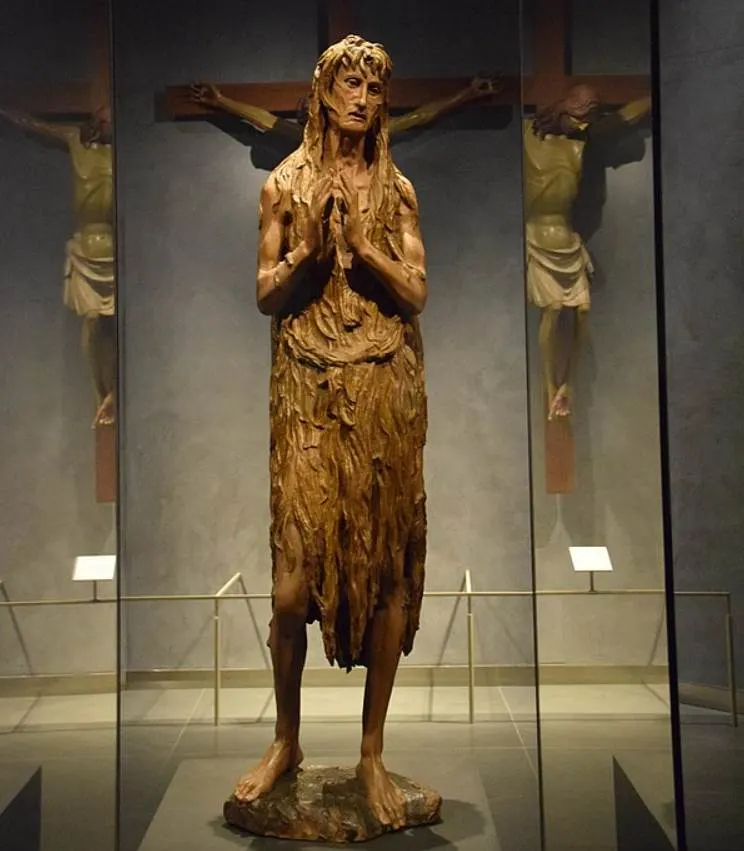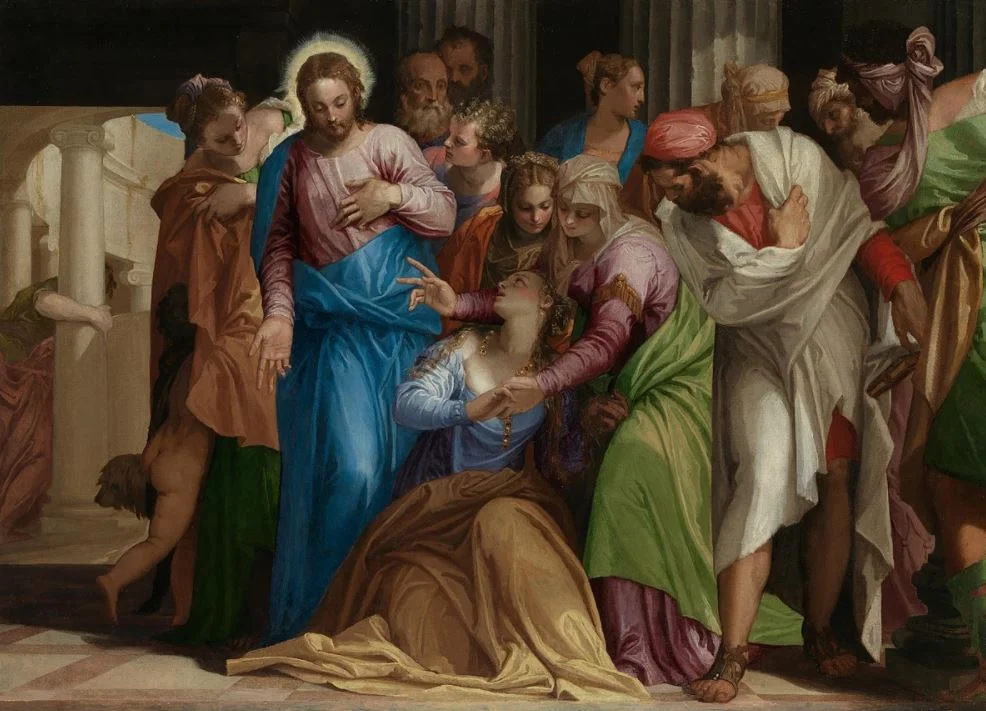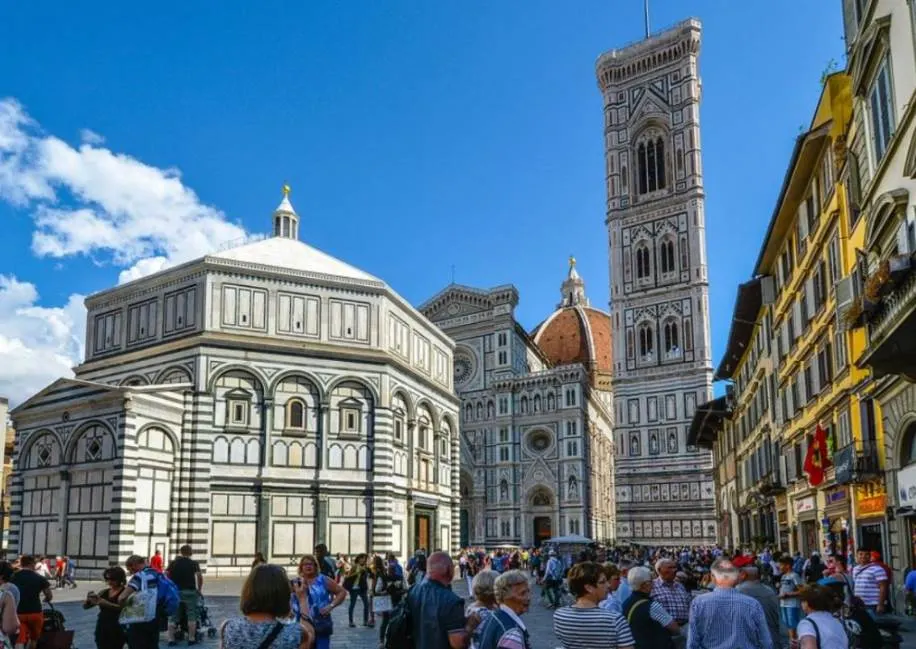We can only imagine the shockwaves that went through the city of Florence when renowned Renaissance artist Donatello (1386-1466) unveiled a sculpture of Mary Magdalene.
She didn’t look exactly as she had been depicted since then, that’s the least we can say. Let’s take a closer look at some of the most interesting facts about Penitent Magdalene, a sculpture by Donatello with a remarkable story.
1. It was sculpted in the first half of the 1450s
Penitent Magdalene is one of the most famous sculptures by Donatello, a man who transformed the world of sculpture after studying classical artworks in Rome in the early 15th century.
He probably lived in Rome for a couple of years together with Filippo Brunelleschi (1377-1446), the leading architect of the time who designed Florence Cathedral and multiple other buildings in Florence.
He started refining the Gothic art of the Middle Ages based on what he learned and is therefore credited as one of the pioneers of Renaissance sculpture.
This particular sculpture was produced when Donatello was already in his sixties, a period long after he started being considered as one of the ultimate masters of his time.

2. It emphasizes the versatility of Donatello for a particular reason
Donatello was an extremely versatile artist who produced sculptures using various materials. He worked with stone, bronze, wood, clay, stucco, and wax to create a wide variety of artworks.
He’s also credited with inventing a particular type of bas-relief which could be used to decorate sculptures or large monuments. The Feast of Herod (1427) at the Baptismal font of the Baptistry of San Giovanni in Siena is a great example of that.
Penitent Magdalene is a wooden sculpture, more particularly, the wood of a silver poplar.

3. It depicts Mary Magdalene as a repenting prostitute

Although Mary Magdalene is mentioned multiple times in the Bible. She was described as a Jewish woman from the fishing town of Magdala. This town was located on the western shore of the Sea of Galilee, a freshwater lake in modern-day Israel.
Her identity became conflated during the Middle Ages. She was identified as both the unnamed sinner who anointed Jesus’ feet at the House of Simon and Mary of Bethany.
To make her identity even more mysterious, she’s also identified as Saint Mary of Egypt, a repenting prostitute who spent the final period of her life in the desert.

4. The sculpture is renowned for its extreme sense of realism
Mary Magdalene, and especially the repenting Mary Magdalene, has been a very popular subject in the world of art. Most of the images of Mary at the time that Donatello started working on this remarkable work portrayed an idealized woman.
According to Western religious tradition, she was renowned for her beauty and that’s why artists often portrayed her as a young and attractive woman.
Donatello didn’t care about these stories and portrayed her as a worn-out and aging prostitute would have looked like in his mind. The sculpture is renowned for the extreme sense of realism that the artist integrated into this work.

5. Donatello was probably inspired by icons found in Eastern Churches
If Donatello aimed to portray Mary Magdalene as Saint Mary of Egypt then he was probably inspired by the stories of Eastern Churches. In Orthodox art, she was depicted as an old and frail woman.
According to the Western tradition, Mary was fed by angels during her time repenting for her sinful life in the desert so she never went hungry. She was therefore depicted as a beautiful woman.
It’s clear that Donatello ignored the Western version of the story and could have been inspired by Orthodox icons depicting Mary Magdalene which he had seen.
6. It was moved several times from its original location
Nothing is known about the original commission of the work. It first surfaces in the year 1500 when it was “moved back to its original location.” This was the Florence Baptistery for which it was presumably commissioned, something confirmed by Giorgio Vasari several decades later.
Vasari wrote this about it in his famous work “The Lives of the Most Excellent Painters, Sculptors, and Architects:”
In the same baptistery, opposite this tomb, a statue from Donatello’s own hand can be seen, a wooden Saint Mary Magdalene in Penitence which is very beautiful and well-executed, for she has wasted away by fasting and abstinence to such an extent that every part of her body reflects a perfect and complete understanding of human anatomy.
It was briefly put in storage after the baptismal font was installed in the baptistery in 1688 but was put back at the southeast wall of the rather dark interior of this medieval building in 1735.

7. How big is Penitent Magdalene by Donatello?
The shock of seeing this remarkable work of art was intensified by the dimensions of the sculpture. Donatello didn’t just depict Mary Magdalene as a frail old woman but also slightly larger than life-sized.
The sculpture stands 188 centimeters (74 inches) tall.
8. Where is the sculpture located today?
The sculpture was moved once more after being placed against the southeast wall of the Florence Baptistery in 1735. IN 1912, it was simply moved to the southwest wall of this building.
Today, the sculpture by Donatello is one of the most fascinating attractions at the Sala della Maddalena of the Museo dell’Opera del Duomo in Florence Italy.
This means it didn’t move that far because this museum is located right on the opposite side of the Florence Baptistery of the Piazza del Duomo in Florence, Italy.
It’s not the only reason why you should take a visit to this museum. It also houses “The Deposition” (1547-1555) by Michelangelo, Lorenzo Ghiberti’s doors of the Baptistery called the “Gates of Paradise,” and a replica of the old façade of Florence Cathedral.

